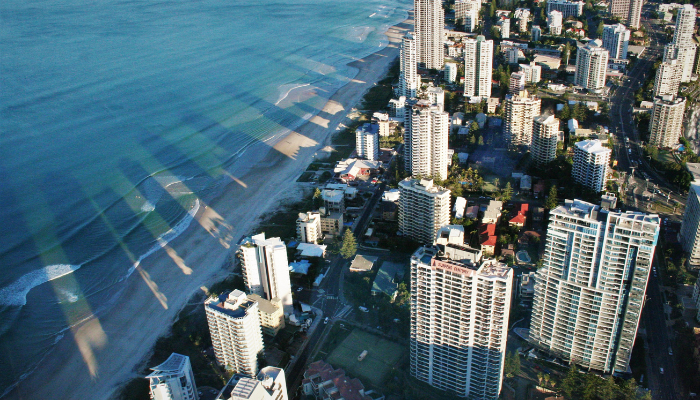
Some regional markets, particularly the prestige lifestyle ones that managed to report the strongest growth amid the pandemic are now showing signs of weak selling conditions.
CoreLogic economist Kaytlin Ezzy said several factors have put downwards pressure on the demand for these markets, including the consecutive rate hikes, affordability constraints, falling consumer sentiments, and high non-discretionary inflation.
“Typically, markets with a higher median value tend to lead the broader market when shifting through different cycles,” Ms Ezzy said.
“After recording some of the strongest value growth throughout the COVID period, each of these areas now have a median house value in excess of $1m — as we move further into the downward phase of the cycle, we would expect to see this decline in values to spread into more regional areas.”
According to CoreLogic’s latest report, regional markets in New South Wales reported the biggest quarterly drops in house prices —Richmond-Tweed, Illawarra, and Southern Highlands and Shoalhaven posted declines of 4.5%, 3.5%, and 3%, respectively.
The South East Queensland regional lifestyle markets of the Sunshine and Gold Coasts also succumbed to the slowdown, hitting quarterly declines of 2.5% and 1.2%, respectively.
Richmond-Tweed also registered the largest quarterly fall in unit values at 3.8%, followed by Victoria’s Ballarat (3.2%) and Geelong (1.9%) regions.
Sales still steady in some markets
Despite the quarterly declines in house and unit prices, regional sales appear to have remained strong on an annual basis in certain regional markets.
Regional Queensland, for instance, witnessed 1.4% higher sales in the year to May, bringing the overall volume 30% higher than the five-year average.
Queensland had the top three regions with the largest increase in sales volumes in the 12 months to May: Townsville (34.2%), Mackay-Isaac-Whitsunday (29.6%, and Central Queensland (28.1%).
However, 15 of the 25 regions covered by the CoreLogic report showed declines in sales activity.
Southern Highlands and Shoalhaven region marked the largest fall at 19.7%, followed by Victoria’s Latrobe – Gippsland (-16.4%), and NSW’s Richmond-Tweed (-14.8%).
Still, Ms Ezzy said while sales activity across some of these regional markets is down compared to the previous year, it’s important to remember this is off the back of some extremely high sales volumes recorded the year prior.
“All but one of the markets analysed recorded a rise in dwelling sales compared to the regions previous five-year average,” she said.
Sellers now offering slightly bigger discounts
Due to the overall slowdown in the demand, vendor discounting has been creeping up in the past two quarters, which suggests that buyers are starting to reign back some control.
“Vendors are now offering slightly larger discounts in order to secure a sale, while regional properties are now taking slightly longer to sell as selling conditions start to shift back in favour of buyers,” she said.
“While inventory levels remain low across the combined regional areas, the trend in newly listed properties is starting to normalise. As more properties come onto the market, vendors will potentially have to make more concessions when trying to secure a sale.”
Vendor discounting went up despite most markets still recording faster selling times compared to last year.
Houses sold the fastest in Toowoomba, where selling time would take a median of 12 days.
Median selling time is also short in Queensland’s Gold Coast and Tasmania’s Launceston and North East regions, where houses only take 17 days before they get sold.
The slowest median selling time was in New England and North West region in NSW, where the median time on market was 43 days — this, however, was already a huge improvement from the 71 days recorded over the year to July 2021.
Outlook muted for regional markets
Ms Ezzy said the declines in property prices would likely become more widespread as interest rates continue to rise and hamper affordability.
“Value declines are already being seen across more expensive regional markets, while the pace of growth has eased considerably across the combined regions’ broad middle and lower quartile markets,” she said.
One positive note, however, is the possibility of regional markets being better insulated than their capital city counterparts due to relative affordability and low advertised supply levels.
“Additionally, the strong growth that’s occurred over the past two years should help cushion regional homeowners from the most extreme effects of the cycles downturn.”
According to ANZ, house prices are projected to fall nearly 20% by the end of 2023, before striking a modest recovery in 2024.
ANZ's forecast points to an 18% decline in capital city prices over the remaining months of 2022 and through 2023. A 5% growth in 2024, however, could be on the cards as mortgage rates start to fall by then.
—
Photo by By Dos from Pexels.